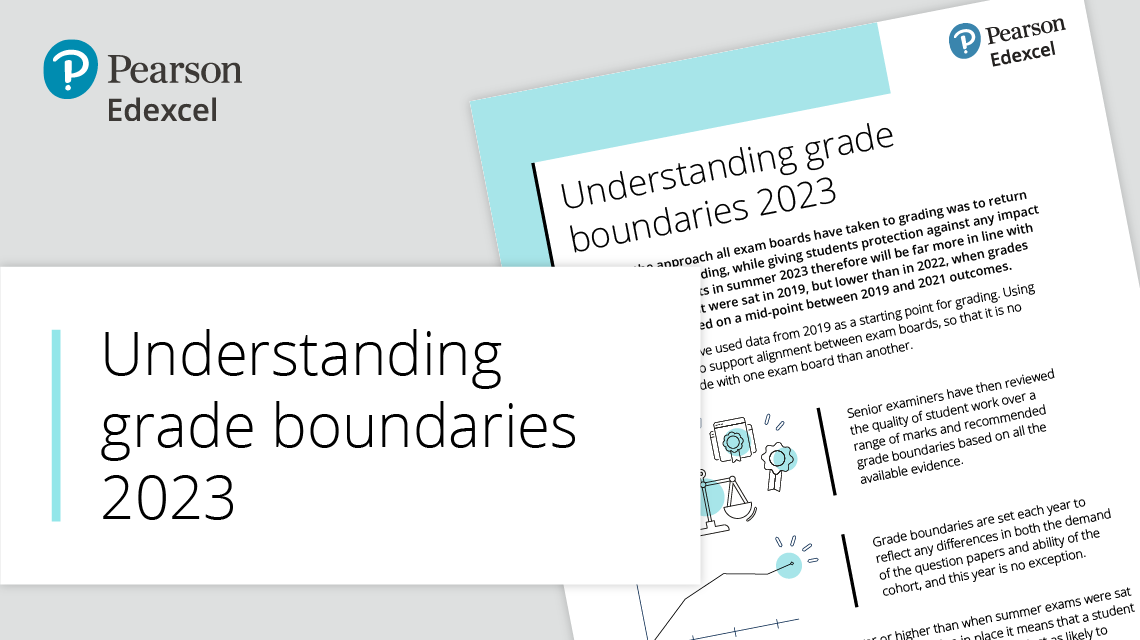Understanding Grade Boundaries 2023
This update includes information about how grade boundaries were set in our Summer 2023 exam series.
Understanding Grade Boundaries 2023 Guidance

This guide explains the approach all exam boards have taken to grading for summer 2023 exams, explaining the progress of setting grade boundaries and reviewing quality of student work.
How are grade boundaries set?
The setting of grade boundaries is a complex process, one which is standardised across exam boards, using a process known as the ‘comparable outcomes framework’.
Grade boundaries are set for each exam series based on the performance of individual papers and qualifications within that series. These vary year on year due to a range of factors including the challenge of the paper, the cohort ability, and the performance of individual questions. This is the same for all subjects, and there is variation of grade boundaries in different papers. This is expected as each paper is looked at individually based on its questions/answers and the cohort that year.
Grade boundaries for each paper are set by senior examiners who check the quality of students’ responses at key judgemental boundaries. This process is also informed by the data collated throughout marking, the mean mark and standard deviation on each paper, as well as by complex statistical data on candidate ability.
This ensures that we can holistically check and assure that the same quality of work attains the same grades across different exam series.
The final grade boundaries are then checked by our standards team and ultimately by Ofqual who ensure consistency across exam boards.
The video below may be useful for understanding the process:
Videos

Why are grade boundaries different to 2019?
Ofqual said that subjects would be returning to pre-pandemic levels and therefore comparisons should be made between 2019 and 2023 to be meaningful, however, this is with regard to grade outcomes (how many students achieved each grade) rather than grade boundaries.
Comparison of grade outcomes
The 2019 and 2023 grade outcomes below show this comparison:
As you can see, the outcomes from 2023 are comparable to 2019. This year, senior examiners were pleased with how students in GCSE Citizenship Studies responded to the exams and found that performance at the 5+ grades were above that which was expected, which explains the slightly increased grade outcomes at these grades.
Why do grade boundaries change?
The intention of adjusting the grade boundaries each year is to ensure fairness across each exam series and ensure that grades are of the same quality year on year. This means a grade in one subject in one year can meaningfully be compared to other years and other exam boards. This however is overseen by senior examiners to ensure the quality of these grades is consistent and that the grade boundaries reflect the same standard of work.
Higher grade boundaries on a paper means that more students were able to access the higher marks across a range of questions and does not mean that the paper was more challenging.
Subject advisor
Jenna Wyatt
Citizenship
